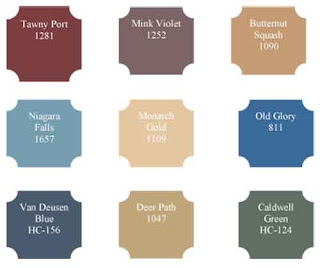Historically we are a nostalgic society. Throughout the course of human progress and
advancements in industry and technology we still hold onto the past while looking
forward. The Ancient Romans borrowed from Greece when building their empire, the European Renaissance looked to Greco-Roman history when creating new cities and art, and the founders of the United States turned to classical Greece when designing the Capitol Building.
Today, in every city you can find
newly developed high-end residential towers where apartments have interior
details with crown molding, baseboards, and wainscots – details that have been
around in the US
since colonial times. The presence of
these details in an expensive condo apartment is meant to represent history, a
better time, a sense of class, a by gone era that we only can imagine and make
attempts to connect with while finding a place to install our new smart tv and
iPhone accessible security system.
Dining room at George Washington's home in Mt. Vernon, Virginia.
Historical colors are another way of connecting with the past while designing new spaces.
Historical residence in Brooklyn, NY .
The presence of Corinthian columns refers back to ancient Rome and culture.
A newly developed residential lobby decorated with ornate greco-roman details.
We can also replicate these ornate details in our existing
homes by making a visit to Lowe’s where all sizes and designs are available for us to purchase and attach to our walls.
The downside is that we can get a bit over board with the decorative details.
In colors we see paint companies offering color lines such
as “Historical Colors” from Benjamin Moore or the historical colors offered at
Farrow & Ball. Color is a simple and inexpensive way to update room and to have a variety of colors to test.
Our nostalgia also extends to furniture and furniture
design today still refers to history for ideas, a connection to the past and
relevancy. Furniture that is called
“modern” for the most part isn’t new.
The ever popular Egg Chair by Arne Jacobsen has been replicated many
times over and can be purchased from a legitimate dealer or as a reproduction
under another name.
The chandelier
once graced only the homes of the wealthy and can now be found in varying forms
from historical reproduction to contemporary and range in prices for different
budgets.
1920s bronze chandelier in the Baroque style from
1stdibs.
Plywood black lacquered chandelier with 21 light bulbs (15 watts each) by
Piet Hein Eek.
The use of colors and materials can “update” a classic look,
making it more suitable for present living. Instead of bronze metal, plywood can be used and the end result can be a new idea based on historical reference. New technology such as improved lighting quality and energy efficiency also plays a role in how we design.
History is the reference, and adaptation is the creative direction. Whether a design appeals to everyone or just one, historically we have been borrowing ideas and presenting them in new interpretations since the beginning of recorded western history. Modernism got rid of the tradition of ornaments and focused on craftsmanship and truth to materials. Present day "modern" design picks up where the early modernists left off, using color and materials as the canvas and design to communicate concept.
Balloona side table (table made of 500 balloons) by
Natalie Kruch











































.jpg)








